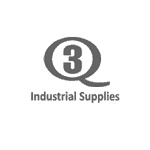6 Reasons to use Ultrasonic Cleaning
For friendly & knowledgable help contact us on:
01924 495 975 hello@sonicsolutionsltd.com Open Contact Form

- It is non-destructive and non-damaging to the item being cleaned unlike many purely physical cleaning methods;
- Its ability to clean items with variable geometry including uneven, remote, small and internal surfaces. Ultrasonic activity accesses all parts of the item in contact with the solution, including small holes and internal chambers which no other cleaning method can guarantee.
- Because it is usually using water based products it presents fewer health, safety and environmental issues.
- It is extremely versatile in the contaminants it can remove since the chemistry can be altered depending upon the contaminant. Ultrasonics are far more universally successful than other methods relying on purely physical or chemical activity. Ultrasonics can successfully remove scale, grease, inks, rusts and particulate;
- Using a mixture of chemistry and physics to remove contaminants it requires less potent chemistry and less physical force than alternative methods such as solvents and blasting;
- With ultrasonic bubbles typically ranging from 20 to 150 microns it is also able to achieve levels of cleanliness few alternatives can match and even destroys bacteria and organic contaminants.

















